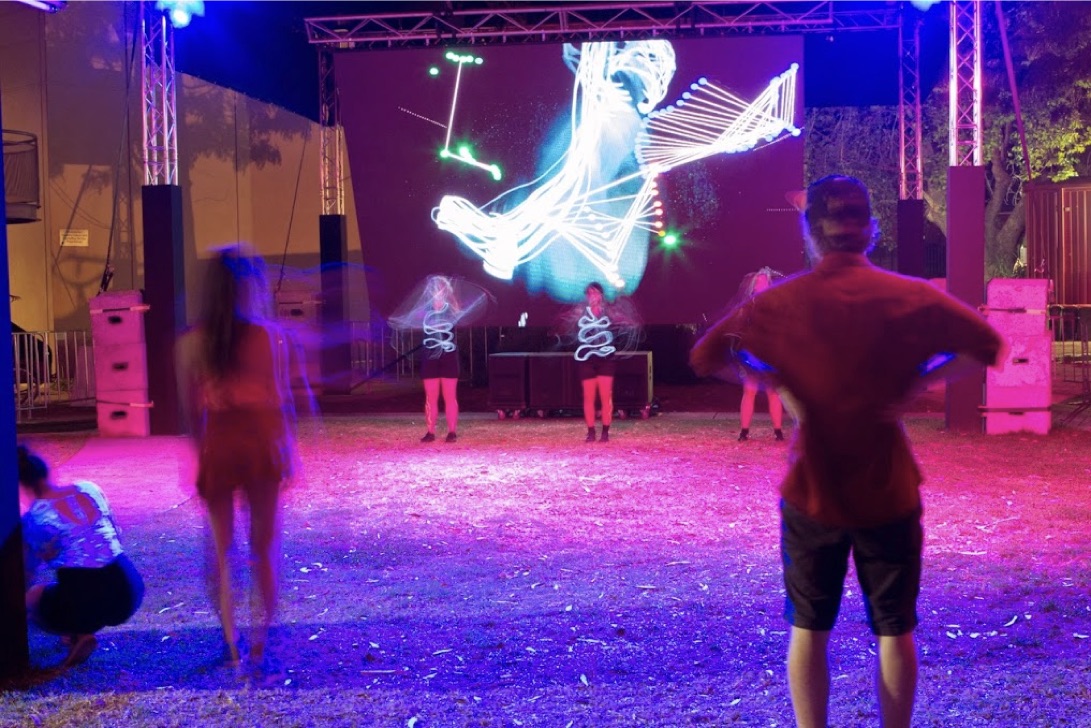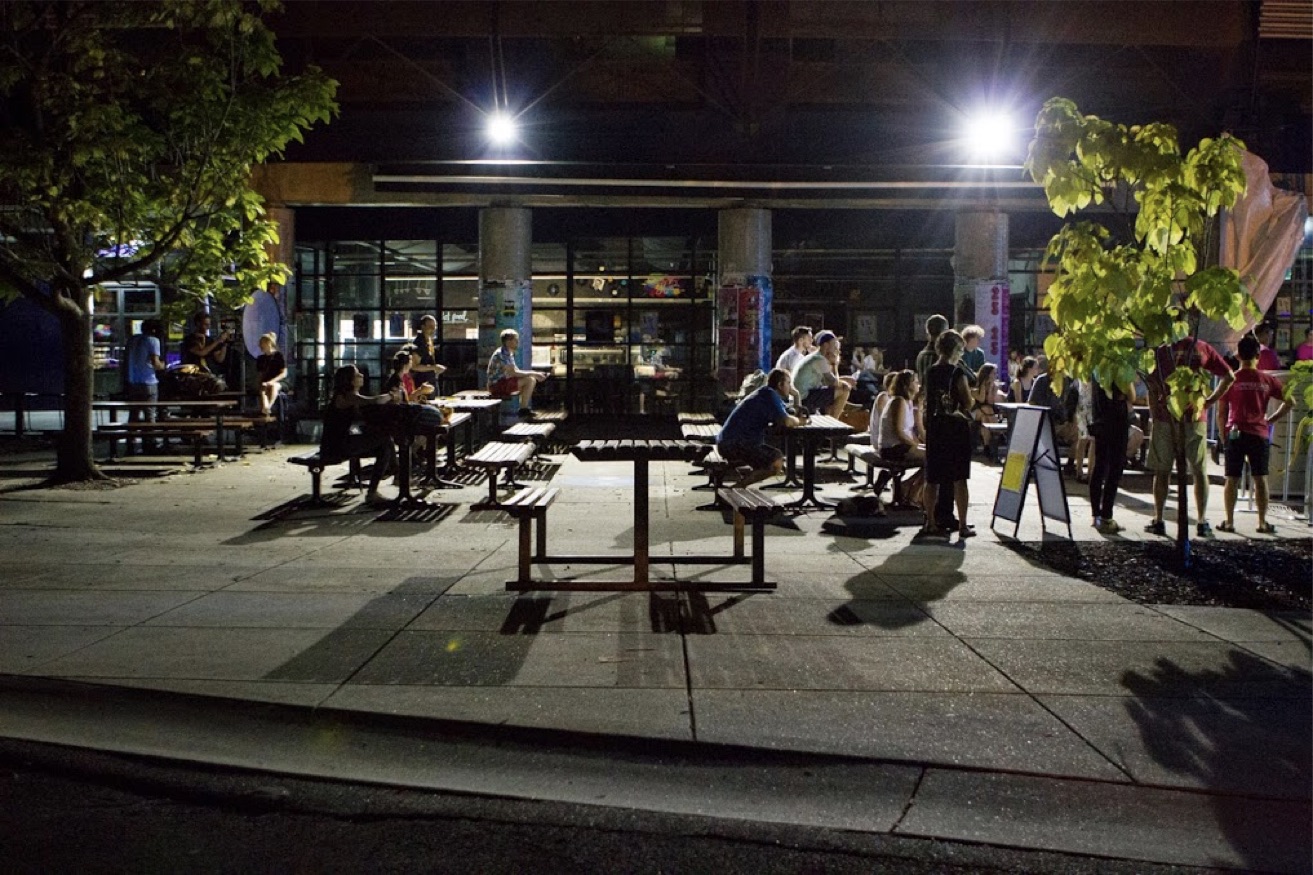Uncovering How People Approach Interactive Installations
Explaining the motivators and inhibitors behind the Honeypot Effect
In this project we investigated the honeypot effect, which describes how people interacting with a system passively stimulate passers-by to observe, approach and engage in an interaction.
Previous research has revealed the successive engagement phases and zones of the honeypot effect. However, there is little insight into:
- how people are stimulated to transition between phases;
- what aspects drive the honeypot effect apart from watching others; and
- what constraints affect its self- reinforcing performance. In this paper, we discuss the honeypot effect as a spatiotemporal model of trajectories and influences.
We thus introduce the Honeypot Model based on the analysis of observations and interaction logs from Encounters, a public installation that interactively translated bodily movements into a dynamic visual and sonic output. In providing a model that describes trajectories and influences of audience engagement in public interactive systems, our paper seeks to inform researchers and designers to consider contextual, spatial and social factors that influence audience engagement.
Publications
- Niels Wouters, John Downs, Mitchell Harrop, Travis Cox, Eduardo Oliveira, Sarah Webber, Frank Vetere, and Andrew Vande Moere. 2016. Uncovering the Honeypot Effect: How Audiences Engage with Public Interactive Systems. In Proceedings of the 2016 ACM Conference on Designing Interactive Systems (DIS '16). ACM, New York, NY, USA, 5-16.
- https://doi.org/10.1145/2901790.2901796
- Sarah Webber, Mitchell Harrop, John Downs, Travis Cox, Niels Wouters, and Andrew Vande Moere. 2015. Everybody Dance Now: Tensions between Participation and Performance in Interactive Public Installations. In Proceedings of the Annual Meeting of the Australian Special Interest Group for Computer Human Interaction (OzCHI '15), Bernd Ploderer, Marcus Carter, Martin Gibbs, Wally Smith, and Frank Vetere (Eds.). ACM, New York, NY, USA, 284-288.
- https://doi.org/10.1145/2838739.2838801




